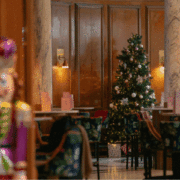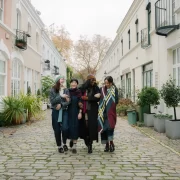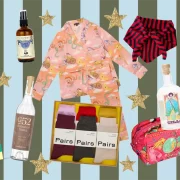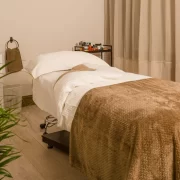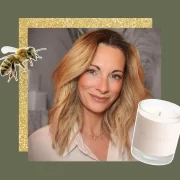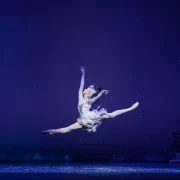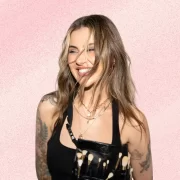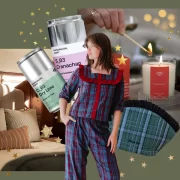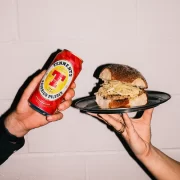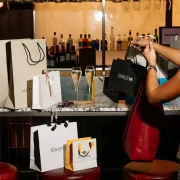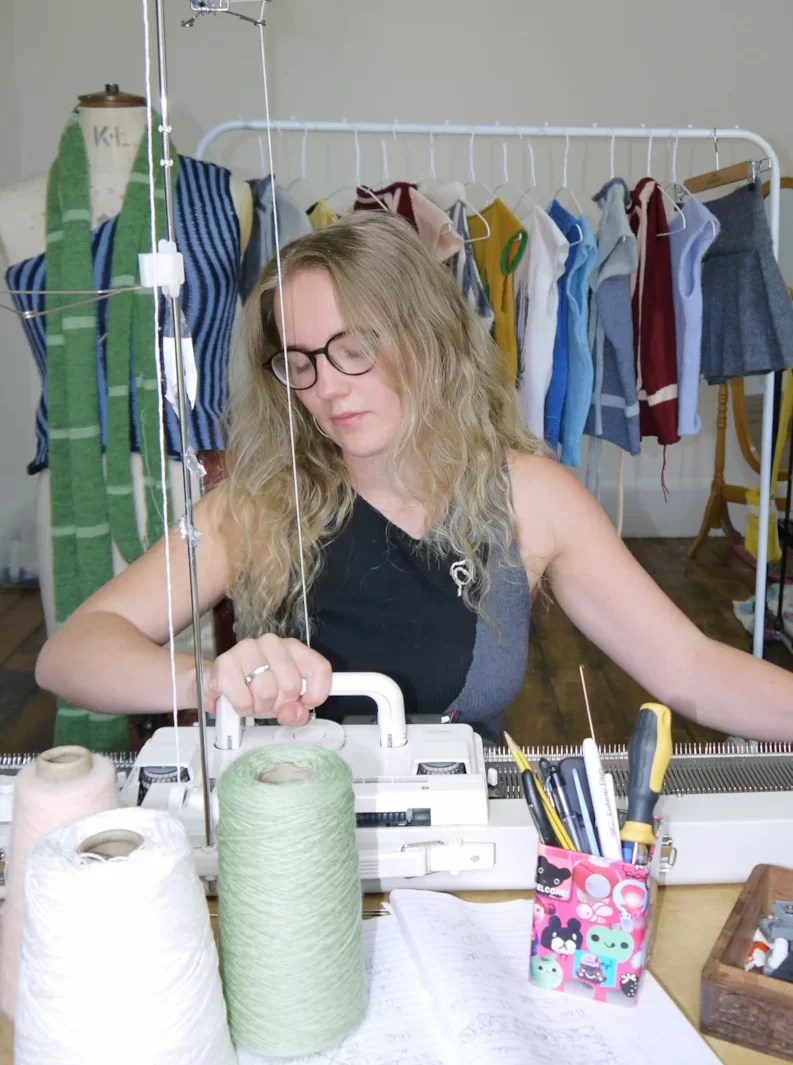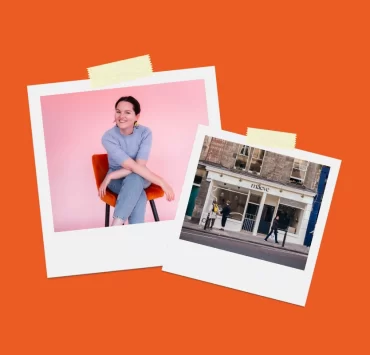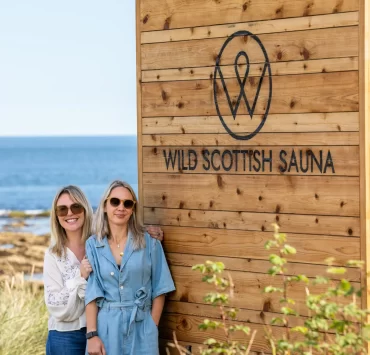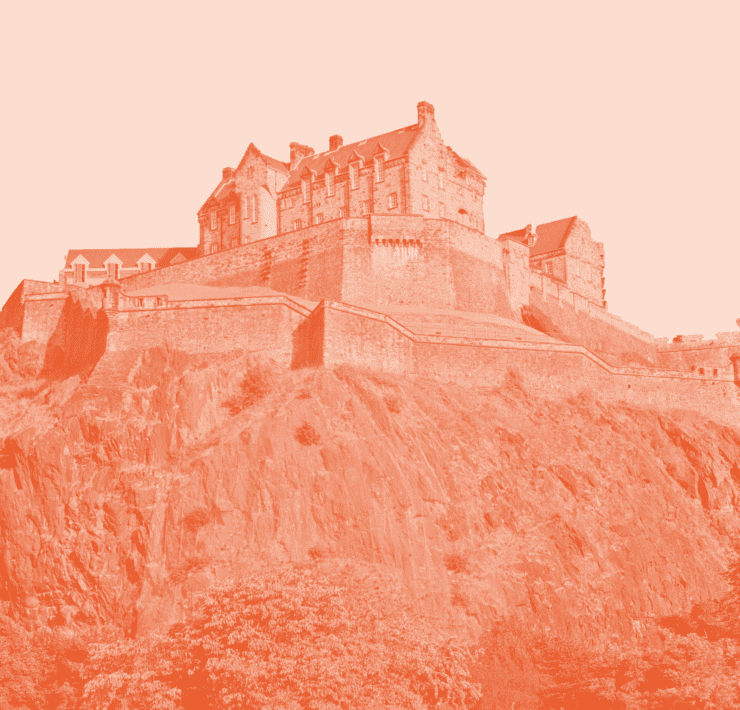‘I’m not a fan of the phrase “love language”,’ admits twentysomething artist-turned-designer Rowan Walker, ‘but gifting knitwear to those close to me quickly became mine.’
Operating from her Glasgow-based studio, Rowan’s made-to-order pieces—think pixel-perfect lobster motifs, clean lines and natural fibres—deliver a personal touch in a market awash with fleeting trends and mass production.
A 2023 MA Fine Art graduate of Edinburgh College of Art, she first caught attention with boundary-pushing sculpture and 3-D animation, showcased in solo exhibitions The Waiting Room (Whitespace, 2023) and Foreign Objects (Summerhall, 2024). Knitting, however, proved irresistible; what began as a lockdown distraction soon evolved into a fully fledged label.
The buzz followed swiftly: Claudia Winkleman ordered a customised Traitors vest, while Texas front-woman Sharleen Spiteri snapped up a McEwan’s-ale homage—cementing Rowan’s status as the name to know in slow, sexy knitwear.
Now Scotland and beyond can shop Rowan Walker—bringing her stitch-perfect “love language” straight to your wardrobe. We caught up with the young designer to talk cult silhouettes, hand-powered machines and why buying better never goes out of style.
How did you go from art student to founding a knitwear company?
Making things with my hands has always been a priority, so going to art school made the most sense to my seventeen-year-old self. During my Fine Art degree at the Edinburgh College of Art (ECA), I learnt so much about my own creativity and, by the end, my work was super conceptual. It felt worlds apart from knitting, which at the time felt more like a hobby.
I learnt how to knit in the lockdown (thank you, YouTube!) and it quickly became something I needed to do—an actual addiction. After a few terrible scarves, I was soon making clothes, and I couldn’t knit fast enough. In my final year of university, I bought my first knitting machine on eBay. I created an Instagram to share my work and started taking commissions—mostly from friends or friends of friends—for custom pieces that I would make at night, often at the expense of sleep.
After graduating from the ECA, I found myself mentally drifting from the art world and physically attached to my knitting machine. As my knitting and design skills improved, so did my goals. They shifted from having artwork in galleries to seeing people out in the world wearing clothes that I made. Honestly, not much else makes me happier.
From order to finished product, can you give me an idea of the process of a completed piece?
When an order comes in, I smile into my Gmail app for a few seconds while I check which piece has been ordered, and by whom. I then set aside a day to start making it. I try to keep my turnaround time under two weeks, so I’m often knitting late into the evening—but it doesn’t really feel like work. I refer to my notebook of scribbled patterns from the trial-and-error phase of a new piece and get started, headphones on. Lately, I’ve been storming through audiobook autobiographies; they’re perfect knitting entertainment.
My pieces all require different functions and techniques depending on the material and design, but the overall process is pretty much the same: cast on, knit, cast off, steam, link, sew in loose ends, steam again, attach the label, package it up, walk to the post office—done.
Are there any guiding aesthetics or inspirations you pull from to achieve your unique style?
I design intuitively, based on my own style, which has a preppy, almost office feel to it. I lean towards vertical lines and geometric shapes, using them in harmony with the body. I guess you could say I take inspiration from the feminine form. I’m not interested in making jumpers for warmth or comfort—knitwear is sexy and I want everyone to know!
The lobsters definitely deserve a mention. That was the first image I ever knitted. Because knitting works on a grid, any image in a piece of knitwear is pixelated, and there was something about the pixelated lobster that I found really attractive. The Lobster Top was my first successful design; something about those claws on the boobs really clicked for people.
How do made-to-order pieces compete in an industry full of fast-fashion products and quick designs?
It’s tough; paying more for clothes and waiting for them to be made isn’t most people’s ideal shopping experience. However, there’s something special about knowing a piece was made specifically for you. It’s a different type of buying that calls for a different mindset. In our current financial climate, I don’t blame people for choosing the cheaper option, but I always encourage people to buy less and buy better. Being proud of the clothes you own and wear is a great feeling.
There’s a growing sustainable-fashion movement—think “de-influencing” and “slow fashion”. Do you see Rowan Walker as part of this?
Absolutely. I see my designs as both season-less and free of trends. The pace of the fashion industry is quite literally toxic to our planet and, as a small business, I don’t see the point of making things that no one will want to wear a few weeks later.
There’s also a real slowness to my production because I can’t make anything quickly. I use a sewing machine for my skirts, but all my knitting equipment is manual—nothing plugs in. Every row, stitch and loose end is done by hand, and the heavy machine is powered by the muscles in my own arms. I can only go so fast!
What has the reception to Rowan Walker been like so far?
So far, the internet has only been kind to me—so, so far so good! Since I’m essentially an online brand operating exclusively on social media, it’s sometimes hard not to compare myself—in terms of likes and followers—to others in the same space. However, when I step back and look at the bigger picture, I can see that I’ve got where I am because people like what I make and are willing to support it. That’s pretty amazing.
What are some key highlights and challenges that come to mind when thinking of your business journey?
A major highlight was getting an email from Claudia Winkleman asking for a customised Traitors vest. It was a total what-the-hell-is-going-on moment—I honestly thought it was a prank at first. It was such a massive win for a small business in its early stages, and I’m so grateful she chose me to make it. Seeing strangers wearing my pieces is always a highlight, too. Knowing I was solely responsible for the design and making of what they’re wearing—it never gets old!
The challenges never really end. I’m a one-woman band, so every aspect of the business is down to me. Perhaps unsurprisingly, given that I’m an artist first and foremost, I’ve found that I’m not particularly business-minded. It’s a grind, and I have periods of real anxiety about how I’m going to keep going sometimes, but I always do—nothing can keep me away from that knitting machine.
Your brand prides itself on natural materials. Why is that important to you?
This is a really important aspect of my design. Mostly, I work with merino and alpaca wool because they’re super soft, and since my clothes are tight-fitting, they need to feel good on the skin. As well as their softness, they’re also high quality. I try to keep my prices accessible, but they definitely aren’t cheap. I want people to see my pieces as an investment, and if the clothes aren’t made from quality materials, they won’t stand the test of time.
It’s also a given that natural materials are much better for the environment. They’re renewable and they look great. Since it takes me just as much time and effort to knit something from acrylic as it does from wool, I always think—why would I use anything less?
What are your dreams for Rowan Walker? Anything our readers should look out for?
A very boring answer, but honestly, being able to afford to pay someone to run my social media would be incredible. A less boring answer? A Rowan Walker runway show (I won’t lie, I have imagined it).
As the brand grows, my designs and ideas will grow too. I’m learning every day about different materials and techniques, and I’m excited for the designs I haven’t even thought of yet. I’d also love to encourage and support more knitting-machine users. I remember how impossible it felt when I started, and I’d love to share what I’ve learnt and make it more accessible for others—just not quite yet!
Keep up with Rowan on Instagram @rowanwalkerknitwear or snag the iconic Lobster Top at rowanwalker.co.uk.


